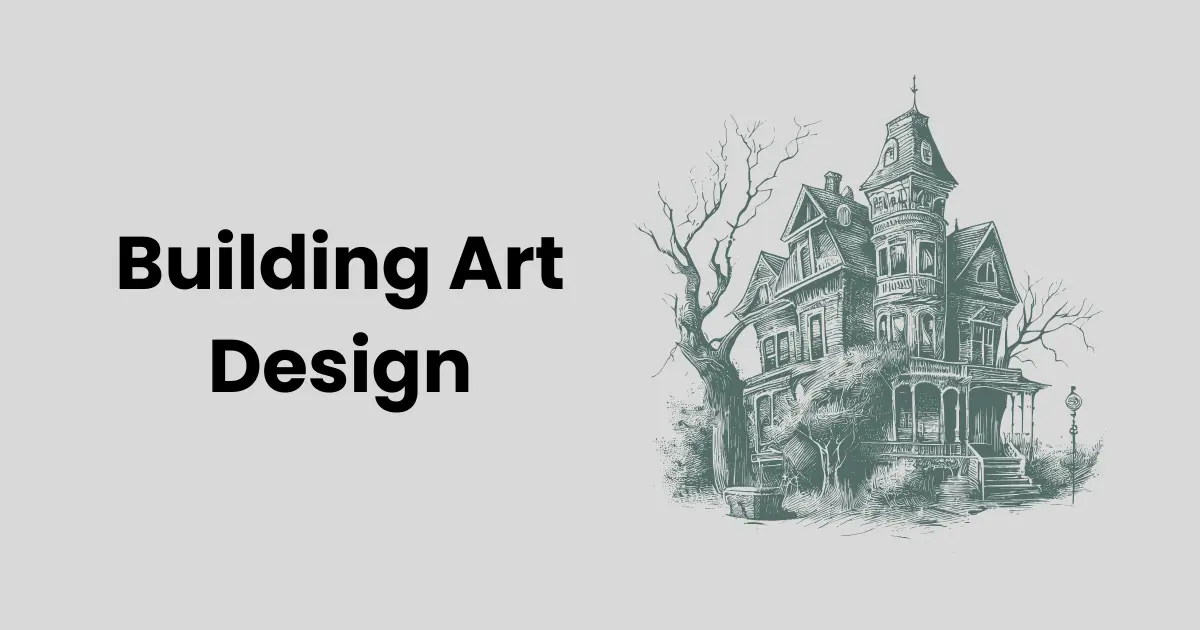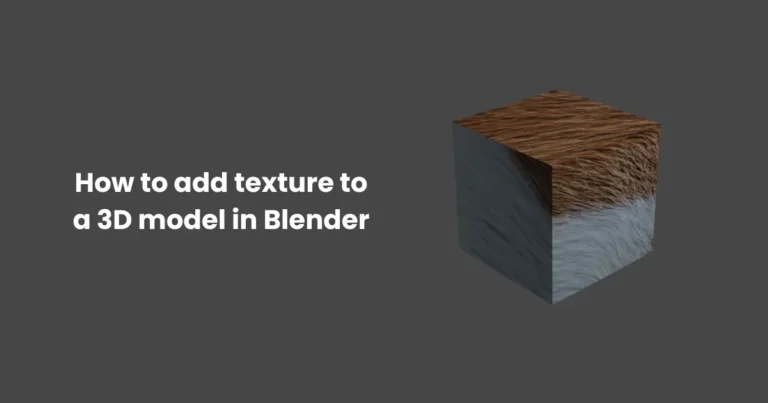Building Art Design | Best Building Art ideas in 2025

Contents
- 1 History of Building Art Design
- 2 Key Elements of Building Art Design
- 3 Functionality and Purpose of Building Art Design
- 4 Types of Building Art Design
- 5 The Role of Building Art Design in Urban Planning
- 6 Building Art Design in Commercial and Residential Projects
- 7 The Role of Technology in Building Art Design
- 8 Challenges in Building Art Design
- 9 Future Trends in Building Art Design
Building art design is the creative and technical process of designing the aesthetic and functional aspects of a structure or building. It combines artistic expression with the principles of architecture to create buildings that are not only practical and durable but also visually appealing and culturally significant. This design approach emphasizes both the form and function of a building, integrating elements such as layout, material selection, lighting, and ornamentation to craft spaces that serve their intended purpose while enriching the environment.
In essence, building art design is about enhancing the user experience through the careful consideration of how a structure looks and feels. Whether it’s a residential home, an office building, or a public landmark, the goal is to create a seamless connection between architecture, art, and the human experience.
History of Building Art Design
Early Beginnings of Building Art Design
The origins of building art can be traced back to ancient civilizations, where architecture and artistic expression were intrinsically linked. In early societies, structures were often built not only for practical purposes but also to reflect cultural values and beliefs. The ancient Egyptians, Greeks, and Romans were some of the first to incorporate art into the design of their buildings, blending aesthetics with function to create monumental structures that have stood the test of time.

In ancient Egypt, for example, the pyramids and temples were not only feats of engineering but also symbols of religious and royal power. These structures were designed to align with celestial patterns and include intricate carvings and artwork that told stories of gods and pharaohs. Similarly, the Greeks brought together architecture and sculpture to create iconic buildings like the Parthenon, where columns, friezes, and sculptures were integral to the overall design.
Evolution of Building Art Design Through the Ages
As history progressed, building art design evolved alongside societal changes, technological advancements, and artistic movements. During the Middle Ages, the Gothic style emerged, with its focus on verticality and light. Cathedrals and churches were designed with towering spires, stained glass windows, and intricate stone carvings, creating a divine atmosphere that was intended to inspire awe and elevate the soul.
The Industrial Revolution in the 18th and 19th centuries brought about significant technological advancements that changed the way buildings were constructed. The use of steel and glass allowed for taller and more open structures, leading to the rise of skyscrapers in the 20th century. This period saw the emergence of modernist and Art Deco styles, which focused on clean lines, geometric shapes, and a minimalist approach to design. These movements emphasized functionality and efficiency while still maintaining an artistic vision.
In the 20th and 21st centuries, building art continued to evolve, influenced by new technologies, sustainability concerns, and globalization. Architects began to experiment with innovative materials, shapes, and forms, pushing the boundaries of what was possible in building design. From the sleek lines of modernist buildings to the organic, flowing forms of contemporary architecture, building art has become more diverse and dynamic than ever before.
Throughout history, building art design has been shaped by the interplay between artistry and practicality. Today, it continues to evolve, reflecting the ever-changing needs and desires of society while remaining deeply rooted in the rich history of architectural design.
Key Elements of Building Art Design
Building art design is a multidisciplinary field that combines artistic vision with technical expertise to create structures that are both functional and aesthetically appealing. Several key elements make up the foundation of building art, ensuring that every aspect of a building’s creation is carefully considered. Below are the essential components that contribute to effective building art design.

Architecture and Structural Design
The architecture and structural design are the backbone of building art design. This element focuses on the overall layout, organization, and construction of the building, ensuring that it is not only visually striking but also safe, durable, and practical. Architectural elements such as walls, roofs, windows, and doors form the skeleton of the building, while the structural design ensures that these elements can withstand environmental forces and provide stability.
Architects and structural engineers collaborate to design buildings that meet functional needs, such as providing adequate space for human activity and complying with safety regulations. The design must consider the building’s intended use—whether it is for residential, commercial, industrial, or public purposes—while also ensuring efficient use of materials and energy.
Aesthetic Elements in Building Art Design
Aesthetics are a core component of building art, as they enhance the visual appeal of a structure and create an emotional connection with the people who interact with it. Aesthetic elements in building art design include:
- Form and Shape: The overall shape and silhouette of a building contribute significantly to its aesthetic impact. The use of symmetrical or asymmetrical designs, curves, sharp angles, and other geometric shapes can create a sense of harmony, contrast, or dynamic energy.
- Materials: The selection of materials for exterior and interior finishes plays a vital role in the visual character of a building. Whether it’s glass, wood, stone, or metal, materials contribute texture, color, and a sense of craftsmanship to the design.
- Color: Color is a powerful tool in building art, influencing the mood and perception of a space. Whether it’s through the use of bold, vibrant colors or subtle, neutral tones, the color scheme can define the building’s overall atmosphere and style.
- Details and Ornamentation: Architectural details like carvings, moldings, columns, and decorative elements contribute to the building’s artistic character. These details can range from intricate designs that reflect cultural heritage to modern, minimalist embellishments.
Functionality and Purpose of Building Art Design
While aesthetics play a crucial role, functionality is equally important in building art design. The primary goal of any building is to serve its intended function, and this must be reflected in its design. Whether the building is a home, office, museum, or commercial space, its design must cater to the practical needs of its users.

Key considerations for functionality in building art design include:
- Space Planning: Efficiently organizing the interior spaces to ensure that they serve the purpose of the building is a vital aspect of design. In residential buildings, this may involve creating comfortable living spaces, while in commercial spaces, it may include optimizing layout for workflow and productivity.
- Accessibility: A good building design must be accessible to everyone, including people with disabilities. Accessibility features such as ramps, wide doorways, and elevators ensure that all individuals can navigate the building with ease.
- Safety and Security: The building must be designed to meet safety codes and regulations, with fire exits, structural integrity, and security systems carefully integrated into the design. Safety features are particularly important in public buildings and large commercial spaces.
- Sustainability: As sustainability becomes a greater concern in modern design, integrating energy-efficient solutions, eco-friendly materials, and sustainable building practices is essential. From passive heating and cooling systems to green roofs, sustainable design can help reduce a building’s environmental impact while enhancing its overall functionality.
Types of Building Art Design
Building art design encompasses a wide range of styles and approaches, each reflecting the needs, values, and technological advancements of the time. The variety of building art types allows architects and designers to experiment with materials, forms, and aesthetics to create structures that are both functional and visually captivating. Below are some of the major types of building art design, each offering its unique style and purpose.
Classical Building Art Design
Classical building art design refers to architectural styles that draw inspiration from the ancient Greek and Roman traditions. This type of design emphasizes symmetry, proportion, and the use of classical elements like columns, arches, and domes. Classical architecture was often used for grand civic buildings, temples, and palaces, with a focus on creating structures that conveyed power, order, and harmony.
Classical architecture remains influential in many public buildings, including government institutions, museums, and churches, offering a sense of tradition and timeless elegance.
Modern and Contemporary Building Art
Modern and contemporary building art design emerged in the 20th century as a reaction to the elaborate ornamentation of previous architectural styles. This design approach embraces simplicity, clean lines, and the use of new materials and technologies. Modern and contemporary architecture often emphasizes functionality and innovation, with a focus on creating spaces that are both efficient and aesthetically striking.
Contemporary design goes further by experimenting with new materials, unique shapes, and a fusion of styles. Iconic examples of modern architecture include the Bauhaus school, which favored functional design, and the works of architects like Frank Lloyd Wright and Le Corbusier.
Eco-friendly and Sustainable Building Art Design
As environmental concerns have become more pressing, eco-friendly and sustainable building art design has gained significant traction in recent decades. This type of design focuses on minimizing the environmental impact of buildings while creating energy-efficient and resource-conscious structures. Sustainable building art incorporates renewable materials, energy-efficient technologies, and green building practices to reduce a structure’s carbon footprint.
Sustainable architecture also considers the building’s life cycle, aiming for structures that are durable, adaptable, and have minimal environmental impact over time. Green buildings such as the Bullitt Center in Seattle or the Edge in Amsterdam are prime examples of eco-friendly designs that blend functionality with environmental responsibility.
High-tech Building Art Design
High-tech building art design emphasizes the integration of cutting-edge technology into the architecture of a building. This style often involves the use of advanced materials, automation systems, and smart technologies to enhance the functionality and sustainability of a structure. High-tech buildings often incorporate elements like glass facades, exposed structural components, and innovative engineering techniques to create futuristic, dynamic designs.
High-tech building designs often blur the lines between architecture and technology, creating futuristic structures that prioritize innovation and sustainability. The Centre Pompidou in Paris, designed by Richard Rogers and Renzo Piano, is one of the most iconic examples of high-tech architecture, featuring exposed pipes and a modular structure.
Postmodern Building Art Design
Postmodern building art emerged as a reaction to the rigid forms and minimalism of modernism. This style embraces ornamentation, eclecticism, and a sense of playfulness, often incorporating references to past architectural styles while rejecting the strict functionalism of earlier movements. Postmodern architecture is known for its use of color, bold shapes, and a mix of historical references to create visually stimulating and often ironic designs.
Postmodern architecture is often seen in urban spaces, cultural centers, and public buildings, where its whimsical and diverse elements create an engaging contrast to the surrounding environment.
The Role of Building Art Design in Urban Planning
Building art design plays a critical role in urban planning, influencing the structure, aesthetics, and functionality of cities. It is not just about creating visually appealing buildings; it is about integrating those buildings into the urban fabric in a way that enhances the quality of life for all residents and visitors. A well-designed city with thoughtfully planned buildings can foster a sense of community, encourage sustainable living, and promote economic development.

Urban planning is about balancing the needs of infrastructure, accessibility, public spaces, and private developments. Building art contributes to this by ensuring that individual structures align with the broader goals of urban development. For instance, buildings that incorporate green spaces, sustainable energy solutions, and efficient transportation links can positively influence the environment, reduce urban heat islands, and improve air quality. Additionally, the aesthetic design of buildings and public spaces plays a vital role in creating a city’s identity, influencing how people perceive and engage with their surroundings. Thoughtfully planned building art can make cities livable, inviting, and resilient, ultimately contributing to the social, cultural, and economic vibrancy of urban areas.
Building Art Design in Commercial and Residential Projects
Building art design plays a vital role in both commercial and residential projects, ensuring that spaces are not only functional but also aesthetically pleasing and conducive to the specific needs of their occupants. In commercial projects, building design must cater to business functions while promoting a positive image for the company. Commercial buildings, such as offices, retail spaces, and mixed-use developments, rely on innovative building art to attract customers, boost employee productivity, and create environments that reflect a brand’s identity. Factors like the layout, lighting, accessibility, and sustainability features are integral to ensuring that commercial spaces are both efficient and engaging.
In residential projects, building art design is key to creating comfortable, functional living spaces that enhance the well-being of inhabitants. The design of homes, apartments, and housing complexes must take into account the needs of the residents, including privacy, accessibility, and convenience. At the same time, it must reflect personal tastes and lifestyle choices, whether through open-plan layouts, aesthetic finishes, or outdoor living areas.
In modern residential buildings, architects and designers also focus on energy efficiency, smart home technologies, and sustainable materials to create spaces that are not only beautiful but also environmentally responsible. Whether for commercial or residential purposes, building art shapes the overall experience of a space, fostering an environment that supports the specific functions and aspirations of its users.
The Role of Technology in Building Art Design
Technology has revolutionized the field of building art design in numerous ways. It empowers designers and architects to push the boundaries of creativity, streamline workflows, and ensure that their designs are both innovative and feasible. The role of technology can be seen in several key areas:

1. Digital Design Tools and Software
Advances in digital tools and software have significantly impacted the building art design process. Architects and designers now have access to sophisticated software that allows them to create, manipulate, and visualize their designs in real time, enhancing both the creative process and the precision of their work.
- Building Information Modeling (BIM): BIM is a digital tool that enables designers to create 3D models of buildings, integrating all relevant information about the project. This technology allows architects to visualize the building’s structure, materials, systems, and overall design before construction begins. BIM not only helps identify potential issues early in the design phase but also promotes collaboration among project stakeholders, from architects and engineers to contractors and suppliers.
- Computer-Aided Design (CAD): CAD software allows architects to create detailed 2D and 3D plans for buildings with greater accuracy and speed. By using CAD, designers can experiment with different design elements, optimize layouts, and adjust proportions to achieve the desired aesthetic and functional outcome.
- Parametric Design: Parametric design uses algorithms and mathematical formulas to create complex, dynamic shapes that adapt to various constraints and conditions. This technology allows architects to explore new design possibilities and achieve innovative building forms that would be difficult or impossible to create using traditional methods.
2. Advanced Construction Techniques
The integration of technology in building construction has led to the development of advanced construction techniques that increase efficiency, reduce waste, and improve the overall quality of the built environment. These techniques not only allow for faster and more cost-effective construction but also enable more precise and intricate designs to be brought to life.
- 3D Printing: Also known as additive manufacturing, 3D printing has emerged as a revolutionary construction technique. Architects and builders can use 3D printing to create complex building components, such as walls, facades, and structural elements, layer by layer. This process allows for the use of custom designs and materials, reducing construction time and costs. Additionally, 3D printing can be used for prototypes, helping architects visualize designs before they are constructed.
- Prefabrication and Modular Construction: Technology-driven approaches like prefabrication and modular construction involve assembling parts of the building off-site and then transporting them to the location for final assembly. These methods speed up construction, reduce material waste, and improve overall precision. Prefabricated components are often designed using digital tools to ensure seamless integration with the rest of the structure.
- Robotics and Automation: Robotics is beginning to play a role in construction by automating repetitive tasks, such as bricklaying, welding, and painting. Robots can increase the efficiency and precision of construction, especially in difficult or hazardous environments, ensuring that the quality of work is consistent across large-scale projects.
3. Smart Building Technologies
Smart building technologies integrate digital systems into the architecture and infrastructure of a building, allowing for enhanced control, comfort, and energy efficiency. These systems use sensors, IoT devices, and automated technologies to optimize how a building operates, making it more adaptable and responsive to the needs of its occupants.
- Building Automation Systems (BAS): BAS enables the automation of a building’s HVAC (heating, ventilation, and air conditioning), lighting, security, and other systems. These systems can be programmed to optimize energy use, adjust lighting based on natural light levels, and control temperature settings for comfort and efficiency. BAS allows for greater energy savings and reduces the building’s overall carbon footprint.
- Energy Management Systems (EMS): Smart energy management systems track and optimize a building’s energy consumption. These systems can monitor electricity, gas, and water usage in real-time, helping building managers identify inefficiencies and reduce waste. By integrating renewable energy sources like solar panels or wind turbines, EMS can further decrease a building’s reliance on non-renewable energy.
- Smart Sensors and IoT Integration: The Internet of Things (IoT) has made it possible for various devices and systems within a building to communicate with each other. Smart sensors detect factors like occupancy, temperature, and light levels, enabling systems to automatically adjust for optimal performance. For example, motion sensors can trigger lights to turn on when a room is occupied, while temperature sensors can adjust the thermostat based on weather conditions.
4. Sustainable Design and Green Technology
Technology has enabled the development of sustainable building practices that reduce environmental impact while improving energy efficiency and occupant comfort. Green technologies are now being incorporated into building designs to make structures more eco-friendly and resource-efficient.
- Solar Power and Renewable Energy: Solar panels and other renewable energy sources are increasingly being integrated into building designs to reduce reliance on fossil fuels. Solar energy can be harnessed to power lighting, HVAC systems, and other building needs, helping to lower energy costs and reduce the carbon footprint of the building.
- Energy-efficient Insulation and Materials: Advances in materials technology have led to the development of energy-efficient insulation, windows, and exterior cladding. These materials help maintain a comfortable indoor climate while minimizing energy loss, thus reducing the building’s overall energy consumption.
- Green Roofs and Urban Farming: Green roofs, which are covered with vegetation, help to reduce a building’s environmental impact by improving air quality, reducing heat island effects, and promoting biodiversity in urban environments. Some buildings also integrate urban farming or rooftop gardens, providing food sources and helping to mitigate the effects of climate change.
5. Virtual Reality (VR) and Augmented Reality (AR) in Design
Virtual reality (VR) and augmented reality (AR) technologies have revolutionized the way architects, designers, and clients experience building art design. These technologies allow for immersive, interactive experiences that help visualize a building before it is constructed.
- Virtual Reality (VR): Using VR headsets, designers and clients can virtually “walk through” a building before it is built. This allows for a deeper understanding of the spatial relationships and layout of the design, making it easier to identify potential design flaws and make adjustments in the early stages of the project.
- Augmented Reality (AR): AR overlays digital information onto the physical world, allowing designers and clients to view virtual elements, such as furniture or finishes, in the context of a real-world space. This enhances the design process by providing a more tangible and interactive experience.
Challenges in Building Art Design
Building art design is a dynamic and multifaceted process that combines creativity, functionality, and technical expertise. While it offers opportunities to shape the built environment in innovative and meaningful ways, it also presents numerous challenges. These challenges can range from the constraints imposed by budgets and regulations to the evolving demands for sustainability, technology integration, and aesthetics. Understanding and addressing these challenges is essential for architects, designers, and developers to create successful and impactful building designs.

1. Balancing Aesthetics and Functionality
One of the primary challenges in building art is achieving the right balance between aesthetics and functionality. While the visual appeal of a building is important for creating a unique and inspiring environment, it must not come at the expense of the building’s practical use. Designers must ensure that the building not only looks good but also serves its intended purpose efficiently.
- Practicality vs. Design Freedom: Sometimes, the desire to create visually striking designs can clash with the functional requirements of the space. For example, a building with an avant-garde facade may not meet practical needs such as ease of movement, lighting, or accessibility.
- User Experience: It’s essential to consider how people will interact with and experience the space. A beautiful design that is not user-friendly or accessible may fail to meet the needs of its occupants, whether it’s a home, office, or public space.
2. Budget Constraints
Designing a building involves significant financial investments, and budget constraints often limit the scope of what can be achieved. Building art design requires finding creative ways to meet design goals while staying within budget limits, which can be particularly challenging when high-end materials, cutting-edge technologies, or large-scale projects are involved.
- Material Costs: The choice of materials plays a crucial role in both the aesthetics and budget of a building project. High-quality or sustainable materials can be expensive, and designers may need to find cost-effective alternatives that still meet the project’s needs without sacrificing visual appeal or durability.
- Technology and Innovation: Incorporating the latest technological innovations or sustainable practices can drive up costs. Designers may face pressure to balance the desire for advanced technologies, such as smart building systems, with the need to stay within budget.
- Unexpected Costs: Construction projects often encounter unforeseen expenses related to design changes, delays, or challenges with materials and labor. These can complicate the design process and require designers to make adjustments on the fly.
3. Building Regulations and Compliance
Building art design must adhere to a complex set of regulations and codes that govern everything from structural integrity to fire safety, accessibility, and environmental impact. These regulations ensure that buildings are safe, functional, and sustainable, but they can also constrain the freedom of designers and introduce challenges during the planning and construction phases.
- Zoning and Permitting Issues: Local zoning laws dictate how land can be used, which can limit design possibilities. For example, there may be restrictions on building height, style, or the types of materials that can be used in certain areas. Navigating these regulations and obtaining the necessary permits can be time-consuming and costly.
- Safety Standards: The design must consider fire safety, structural integrity, seismic resistance, and other building codes that ensure the safety of occupants. These standards can sometimes conflict with aesthetic or design aspirations, especially in the case of non-traditional structures or materials.
- Sustainability Regulations: As the demand for sustainable and energy-efficient buildings grows, so do regulations surrounding green building practices. Meeting sustainability goals may require designers to incorporate specific energy-efficient systems, eco-friendly materials, or renewable energy sources, which can increase both the complexity and cost of the project.
Future Trends in Building Art Design
As the world continues to evolve, so too does the field of building art design. With technological advancements, changing societal needs, and an increased focus on sustainability, the future of building art holds exciting potential. Architects, designers, and builders are exploring new approaches to create structures that are not only aesthetically appealing but also functional, sustainable, and adaptable to the ever-changing demands of modern life. Below are some key future trends in building art that are likely to shape the industry in the coming years.

1. Sustainable and Eco-friendly Design
Sustainability is one of the most important trends shaping the future of building art design. As the global focus on environmental responsibility intensifies, architects and designers are prioritizing eco-friendly materials, energy-efficient designs, and sustainable construction practices.
- Energy-efficient Buildings: The demand for energy-efficient buildings will continue to rise. Future buildings will incorporate advanced insulation materials, passive design strategies, and energy-efficient windows to minimize energy consumption. Technologies like solar panels, wind turbines, and geothermal heating and cooling systems will become standard features in many new buildings.
- Circular Architecture: Circular design focuses on minimizing waste by designing buildings that can be easily adapted, repurposed, or dismantled for reuse. This approach contrasts with traditional “linear” designs, which often result in demolition waste. Circular architecture encourages the use of recyclable materials, modular components, and construction techniques that can be modified over time to meet new needs.
- Green Building Certifications: The future of building design will likely see an increase in buildings being constructed to meet green certifications, such as LEED (Leadership in Energy and Environmental Design) and BREEAM (Building Research Establishment Environmental Assessment Method). These certifications help ensure that buildings meet high standards for environmental performance, promoting sustainability throughout the lifecycle of the building.
2. Smart Buildings and Technology Integration
As technology continues to advance, smart buildings will become more widespread, offering greater connectivity, automation, and intelligence. These buildings will be designed to optimize energy usage, improve occupant comfort, and integrate seamlessly with the surrounding environment.
- IoT and Building Automation: The integration of the Internet of Things (IoT) into building design will allow buildings to become smarter and more responsive. Sensors and devices embedded in the building will collect data and automatically adjust systems, such as lighting, heating, and security, based on occupancy, weather, and other factors. These systems will not only enhance comfort and security but also reduce energy consumption by optimizing resource use.
- Artificial Intelligence (AI) in Building Management: AI will play a significant role in managing and optimizing building performance. AI algorithms can analyze data from building systems to predict maintenance needs, optimize energy usage, and even improve indoor air quality. Smart buildings will be capable of learning from patterns of use and adapting to user preferences, creating highly personalized and efficient living or working environments.
- Augmented Reality (AR) and Virtual Reality (VR): AR and VR are already being used in the design and construction phases, and their role will continue to grow. These technologies allow architects and clients to visualize and interact with building designs in an immersive way. VR can enable virtual walkthroughs of buildings before they are built, while AR can be used to overlay design elements onto real-world environments, helping to make more informed decisions during the design process.
3. Biophilic Design and Nature Integration
Biophilic design focuses on connecting people with nature by incorporating natural elements into built environments. This design philosophy is gaining traction as research shows that access to nature improves physical and mental well-being, boosts productivity, and enhances overall life satisfaction.
- Indoor Greenery: Future buildings will increasingly incorporate plants and natural elements into their design, both inside and out. Green walls, rooftop gardens, and living facades will become common features in urban spaces, promoting biodiversity and improving air quality.
- Natural Light and Ventilation: Maximizing natural light and ventilation will remain a priority in building design. Large windows, skylights, and open spaces will be used to enhance the connection to the outdoors, while passive ventilation techniques will reduce the reliance on artificial heating and cooling systems.
- Sustainable Landscaping: Landscaping will also play a critical role in biophilic design. Future building projects will incorporate native plants and water-efficient designs to promote ecological balance and reduce environmental impact. Green spaces within urban areas will also help combat the urban heat island effect, providing cooler, more comfortable spaces for residents and workers.
Conclusion
The future of building art design is poised to be shaped by a harmonious blend of sustainability, technological innovation, and a deep understanding of human needs. As the demand for eco-friendly, energy-efficient buildings continues to rise, architects and designers will prioritize green materials, energy-saving technologies, and the integration of nature into urban spaces. These trends are not only driven by environmental concerns but also by a growing desire to create healthier, more adaptable environments for people. Whether through smart technologies, modular construction, or the reuse of existing structures, building art design will increasingly focus on reducing waste, enhancing functionality, and promoting well-being.
Looking ahead, the fusion of cutting-edge technologies like AI, 3D printing, and smart systems with timeless design principles will lead to more personalized, efficient, and sustainable buildings. As cities become more crowded and climate change continues to present new challenges, the future of building art design will rely on creativity, adaptability, and forward-thinking strategies to transform the built environment. By embracing these trends, designers, and architects will play a pivotal role in shaping a built world that is both innovative and mindful of its impact on people and the planet.






